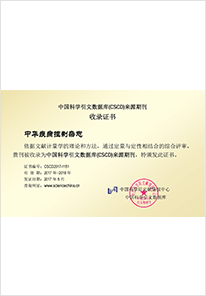2019 Vol. 23, No. 3
Display Method:
2019, 23(3): 249-252.
doi: 10.16462/j.cnki.zhjbkz.2019.03.001
Abstract:
2019, 23(3): 253-258.
doi: 10.16462/j.cnki.zhjbkz.2019.03.002
Abstract:
2019, 23(3): 259-262, 288.
doi: 10.16462/j.cnki.zhjbkz.2019.03.003
Abstract:
2019, 23(3): 263-267.
doi: 10.16462/j.cnki.zhjbkz.2019.03.004
Abstract:
2019, 23(3): 268-272.
doi: 10.16462/j.cnki.zhjbkz.2019.03.005
Abstract:
2019, 23(3): 273-277.
doi: 10.16462/j.cnki.zhjbkz.2019.03.006
Abstract:
2019, 23(3): 294-298, 323.
doi: 10.16462/j.cnki.zhjbkz.2019.03.010
Abstract:
2019, 23(3): 299-303.
doi: 10.16462/j.cnki.zhjbkz.2019.03.011
Abstract:
2019, 23(3): 304-307.
doi: 10.16462/j.cnki.zhjbkz.2019.03.012
Abstract:
2019, 23(3): 308-312.
doi: 10.16462/j.cnki.zhjbkz.2019.03.013
Abstract:
2019, 23(3): 313-317.
doi: 10.16462/j.cnki.zhjbkz.2019.03.014
Abstract:
2019, 23(3): 318-323.
doi: 10.16462/j.cnki.zhjbkz.2019.03.015
Abstract:
2019, 23(3): 324-327, 350.
doi: 10.16462/j.cnki.zhjbkz.2019.03.016
Abstract:
2019, 23(3): 328-331.
doi: 10.16462/j.cnki.zhjbkz.2019.03.017
Abstract:
2019, 23(3): 332-335.
doi: 10.16462/j.cnki.zhjbkz.2019.03.018
Abstract:
2019, 23(3): 341-344.
doi: 10.16462/j.cnki.zhjbkz.2019.03.020
Abstract:
2019, 23(3): 351-355.
doi: 10.16462/j.cnki.zhjbkz.2019.03.022
Abstract:
2019, 23(3): 356-359.
doi: 10.16462/j.cnki.zhjbkz.2019.03.023
Abstract:
2019, 23(3): 360-364.
doi: 10.16462/j.cnki.zhjbkz.2019.03.024
Abstract:
2019, 23(3): 365-368.
doi: 10.16462/j.cnki.zhjbkz.2019.03.025
Abstract:
2019, 23(3): 369-372.
doi: 10.16462/j.cnki.zhjbkz.2019.03.026
Abstract:


 Email alert
Email alert RSS
RSS Abstract
Abstract HTML
HTML PDF
PDF





